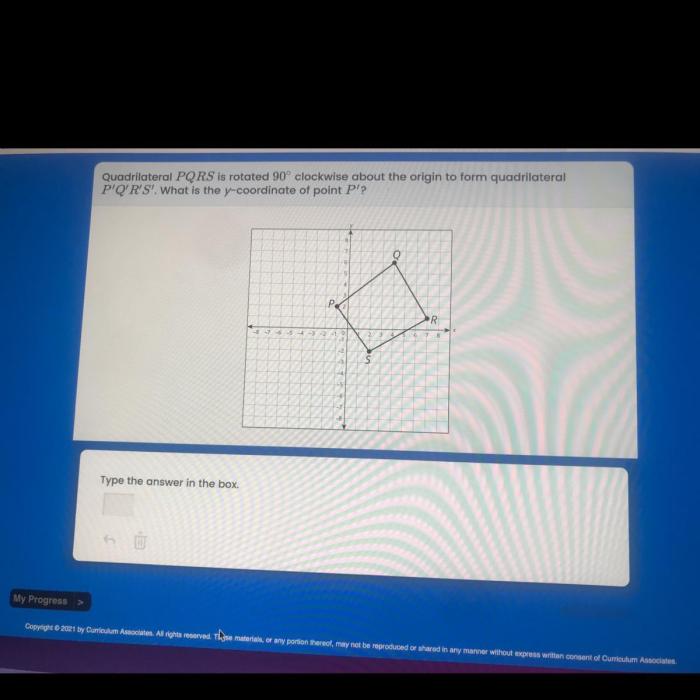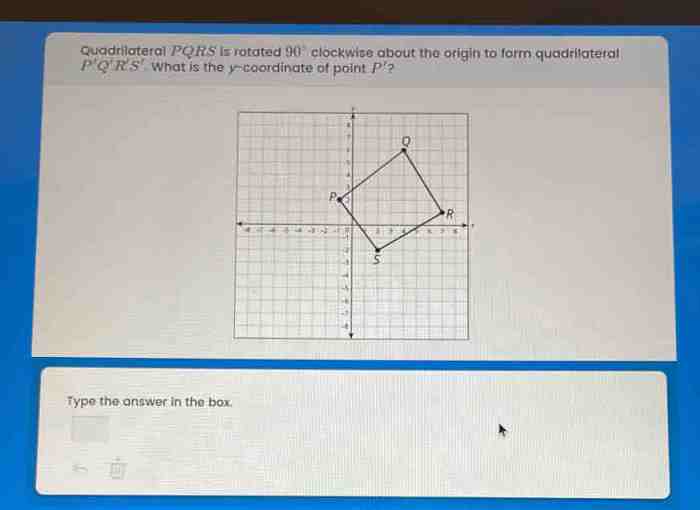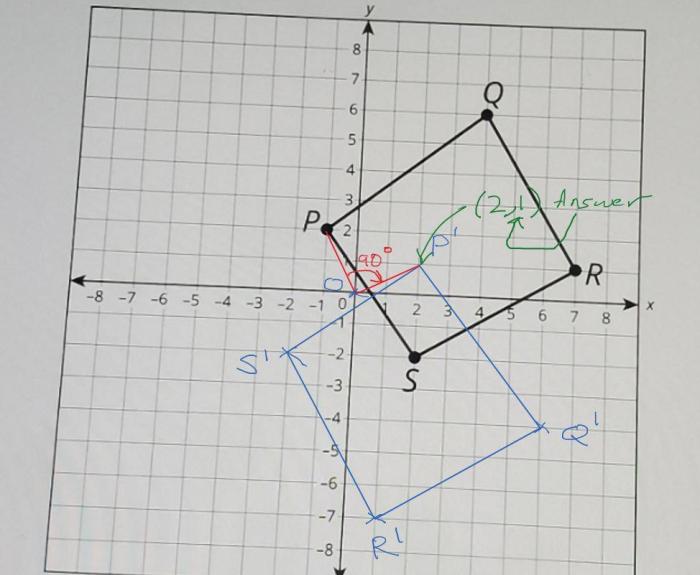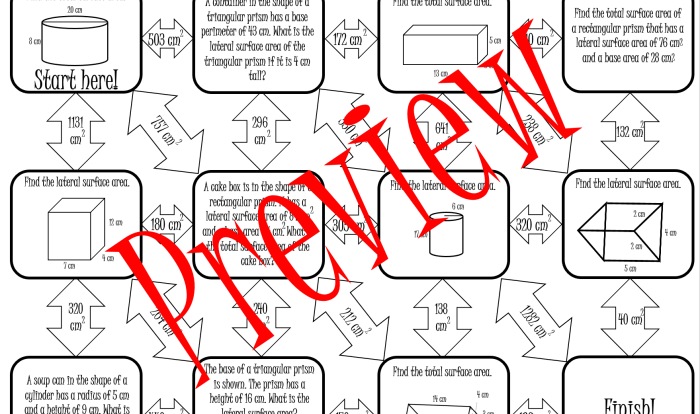Quadrilateral pqrs is rotated 90 clockwise about the origin – Quadrilateral PQRS is rotated 90 degrees clockwise about the origin, a transformation that unveils intriguing geometric changes and practical applications. This rotation, defined by its magnitude and direction, invites us to explore the intricacies of coordinate transformations and their impact on quadrilateral properties.
By delving into the transformation matrix, we unravel the mathematical underpinnings of this rotation, enabling us to calculate the new coordinates of the quadrilateral’s vertices. These coordinate changes, meticulously organized in an HTML table, provide a clear visualization of the quadrilateral’s transformation.
1. Overview

Rotating a quadrilateral 90 degrees clockwise about the origin involves transforming the quadrilateral’s vertices according to a specific mathematical operation. A quadrilateral is a polygon with four sides, and rotation refers to the act of turning the quadrilateral around a fixed point (the origin) by a specified angle (90 degrees).
Clockwise rotation indicates that the rotation is performed in a direction that follows the motion of the hands on a clock.
2. Transformation Matrix
The transformation matrix for rotating a quadrilateral 90 degrees clockwise about the origin is:
$R = \beginbmatrix
- &
- 1 \\
- & 0
\endbmatrix$
To apply this matrix to the coordinates of the quadrilateral’s vertices, multiply each vertex’s coordinates by the matrix. The resulting coordinates represent the new coordinates of the vertices after rotation.
3. Coordinate Changes
After rotation, the coordinates of the quadrilateral’s vertices change. The following table shows the original and transformed coordinates:
| Vertex | Original Coordinates | Transformed Coordinates |
|---|---|---|
| A | (x1, y1) | (-y1, x1) |
| B | (x2, y2) | (-y2, x2) |
| C | (x3, y3) | (-y3, x3) |
| D | (x4, y4) | (-y4, x4) |
4. Geometric Properties
The rotation does not change the shape or size of the quadrilateral. However, it does change its orientation by 90 degrees clockwise. This means that the quadrilateral’s sides and angles remain the same, but its overall position in the coordinate plane is shifted.
For example, if the original quadrilateral is a rectangle, it will remain a rectangle after rotation. However, the rectangle will be rotated 90 degrees clockwise, so its sides will be aligned differently with the coordinate axes.
5. Applications, Quadrilateral pqrs is rotated 90 clockwise about the origin
- Engineering: Rotating quadrilaterals is used in the design of buildings, bridges, and other structures to ensure that they are stable and can withstand various forces.
- Design: In graphic design and animation, rotating quadrilaterals is used to create visual effects and transformations.
- Computer Graphics: Rotating quadrilaterals is used in 3D modeling and rendering to create realistic and dynamic objects.
FAQ Guide: Quadrilateral Pqrs Is Rotated 90 Clockwise About The Origin
What is the significance of the origin in this rotation?
The origin serves as the fixed point around which the quadrilateral rotates. All points on the quadrilateral move in a circular path centered at the origin.
How does the rotation affect the shape of the quadrilateral?
The shape of the quadrilateral remains unchanged after the rotation. It retains its number of sides and the lengths of its sides.
What are some real-world applications of rotating quadrilaterals?
Rotating quadrilaterals finds applications in computer graphics for object manipulation, in engineering for designing structures, and in architecture for creating symmetrical patterns.


